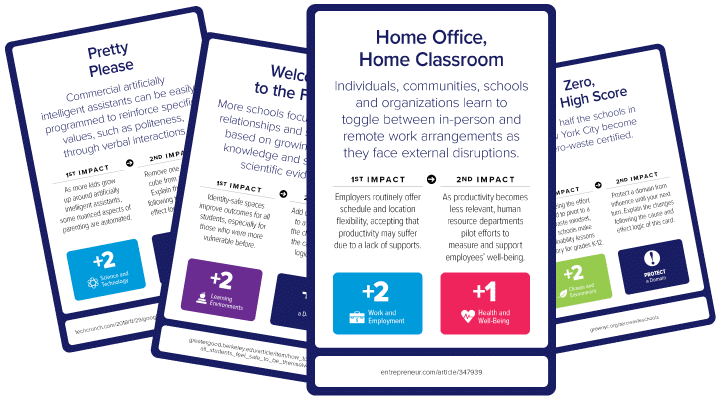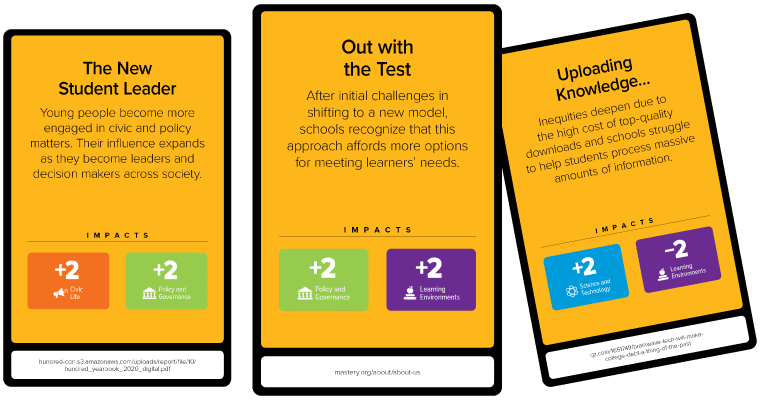
The future is in your hand
The decisions you make change the game for everyone
IMPACT: Learning Edition is a board game that uses futures thinking to help you imagine and think critically about changes that could impact the future of learning. Players take on diverse characters – each with their own role, values and unique set of preferred future conditions – and compete to create a world where their future role is relevant and secure.
Perfect for three to five players, IMPACT: Learning Edition helps players to recognize the roles they play in shaping the future they want – even after the game is over.

Deepen your understanding of cause-and-effect relationships



Alignment, accountability and algorithms are Alex’s areas of expertise. He curates data about learning and helps his learning community make sense of it all. He helps educators use technology for evidence-based, formative assessment and feedback and ensures alignment with state accountability systems, keeping an eye on privacy and security.













IMPACT: Learning Edition is an adaptation of IMPACT: A Foresight Game, a game originally designed by Idea Couture in collaboration with Policy Horizons Canada. This version was created with permission from Idea Couture and its parent company, Cognizant.

IMPACT: Learning Edition reflects extensive strategic foresight research done by KnowledgeWorks over a two-year period, led by Maria Romero and with contributions from Katherine Prince, Jason Swanson, Katie King and other colleagues from KnowledgeWorks.
A bold new vision for the future of education reimagines what’s possible in education when learning systems and structures center…

An introduction to a personalized, competency-based learning transformation journey
Five strategies to go from teacher- to learner-centered
A future of learning where students of all races and ethnicities, incomes and identities pursue the kinds of learning experiences that enable them to uncover their passions and thrive in an evolving world.
Subscribe to receive email updates including expert insights, success stories and resources.